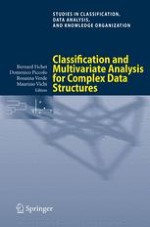The growing capabilities in generating and collecting data has risen an urgent need of new techniques and tools in order to analyze, classify and summarize statistical information, as well as to discover and characterize trends, and to automatically bag anomalies. This volume provides the latest advances in data analysis methods for multidimensional data which can present a complex structure: The book offers a selection of papers presented at the first Joint Meeting of the Société Francophone de Classification and the Classification and Data Analysis Group of the Italian Statistical Society. Special attention is paid to new methodological contributions from both the theoretical and the applicative point of views, in the fields of Clustering, Classification, Time Series Analysis, Multidimensional Data Analysis, Knowledge Discovery from Large Datasets, Spatial Statistics.
